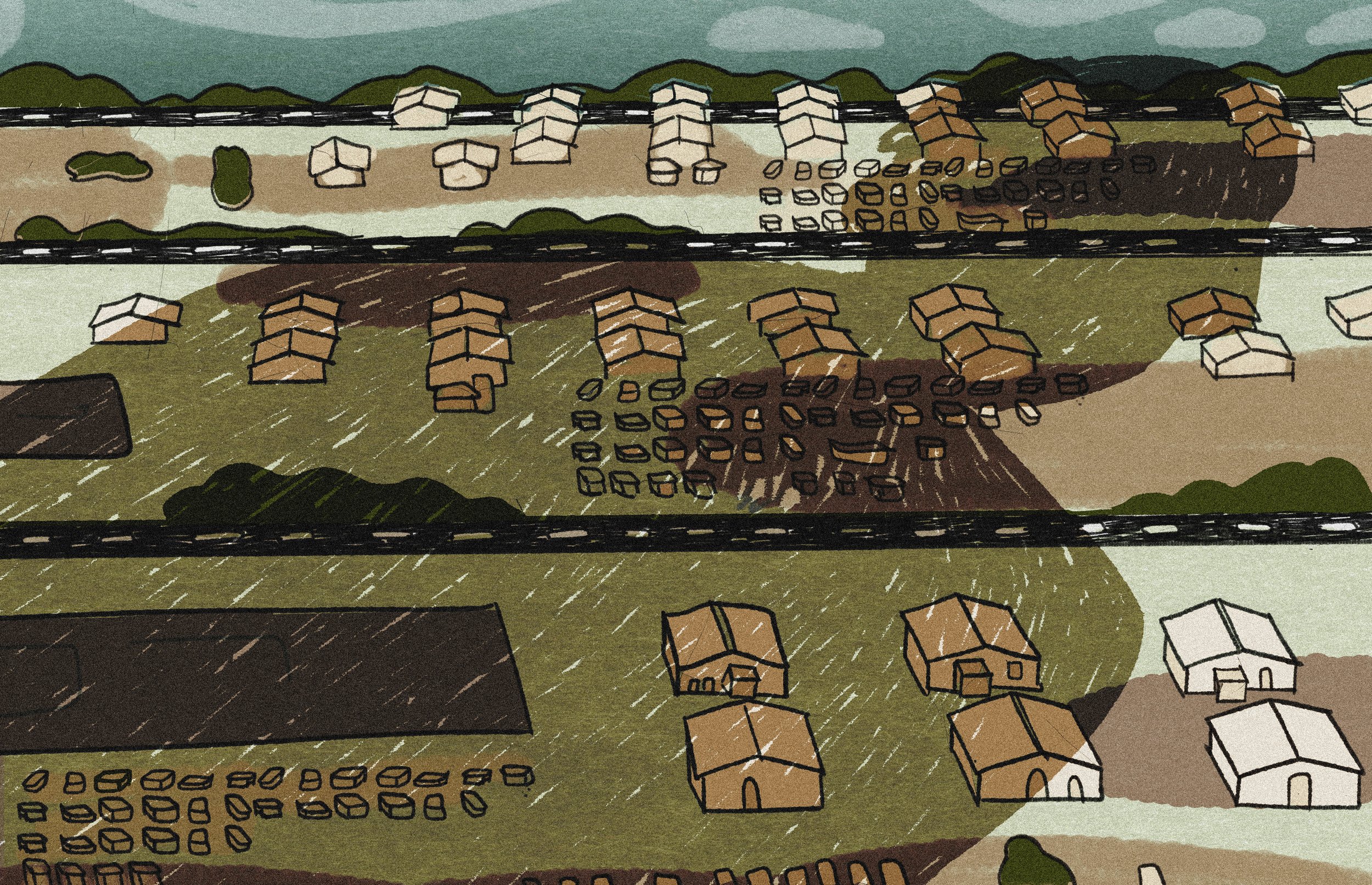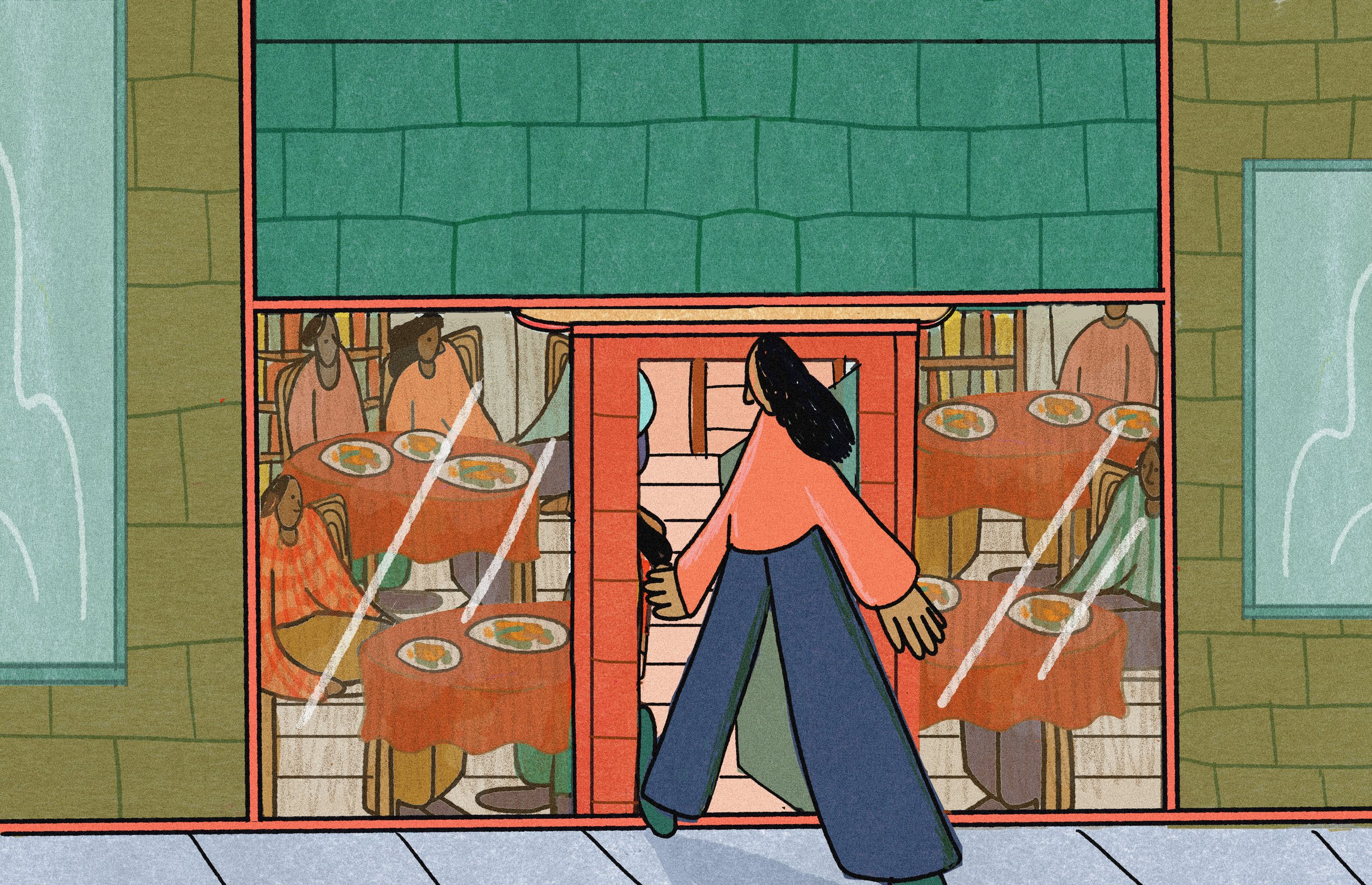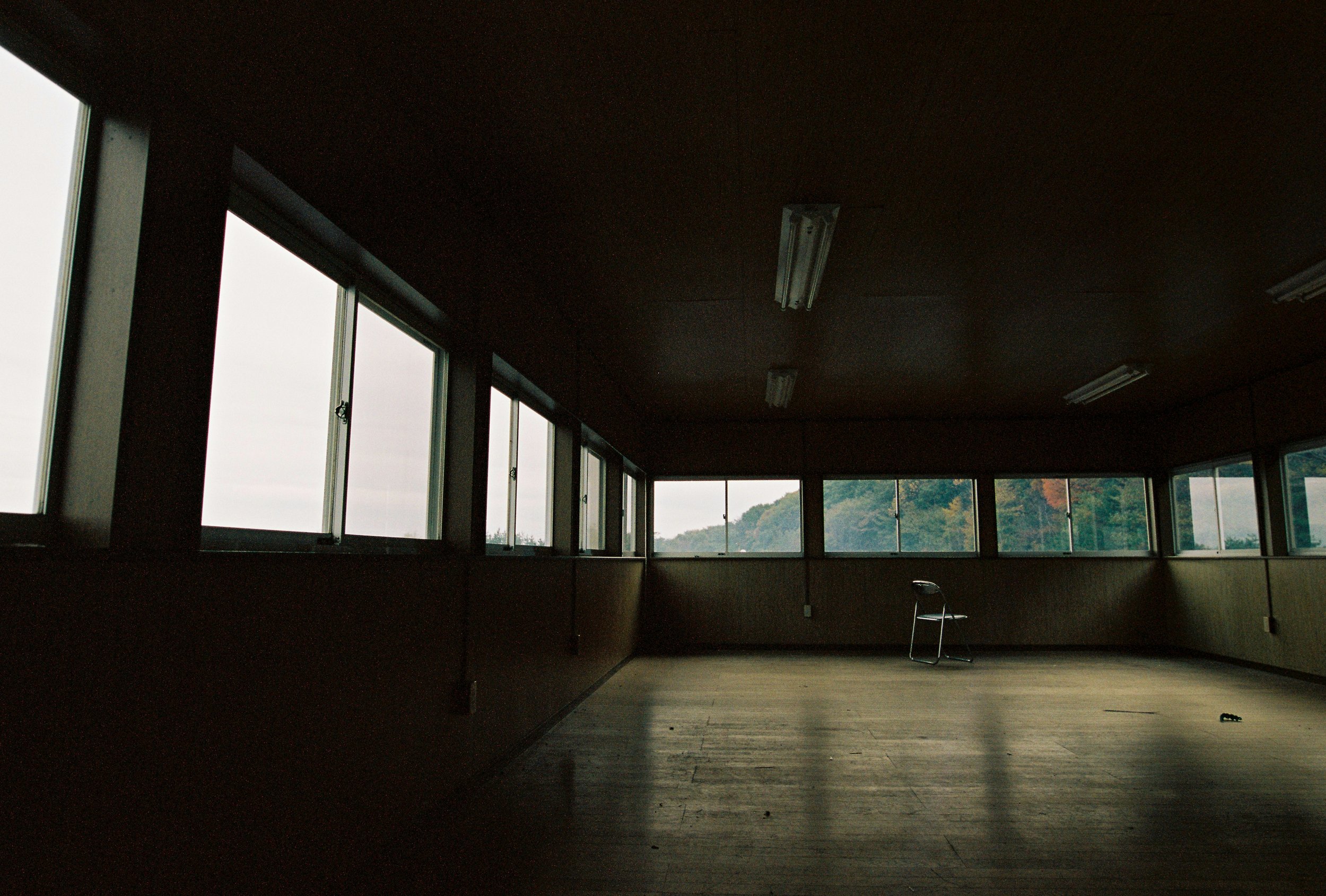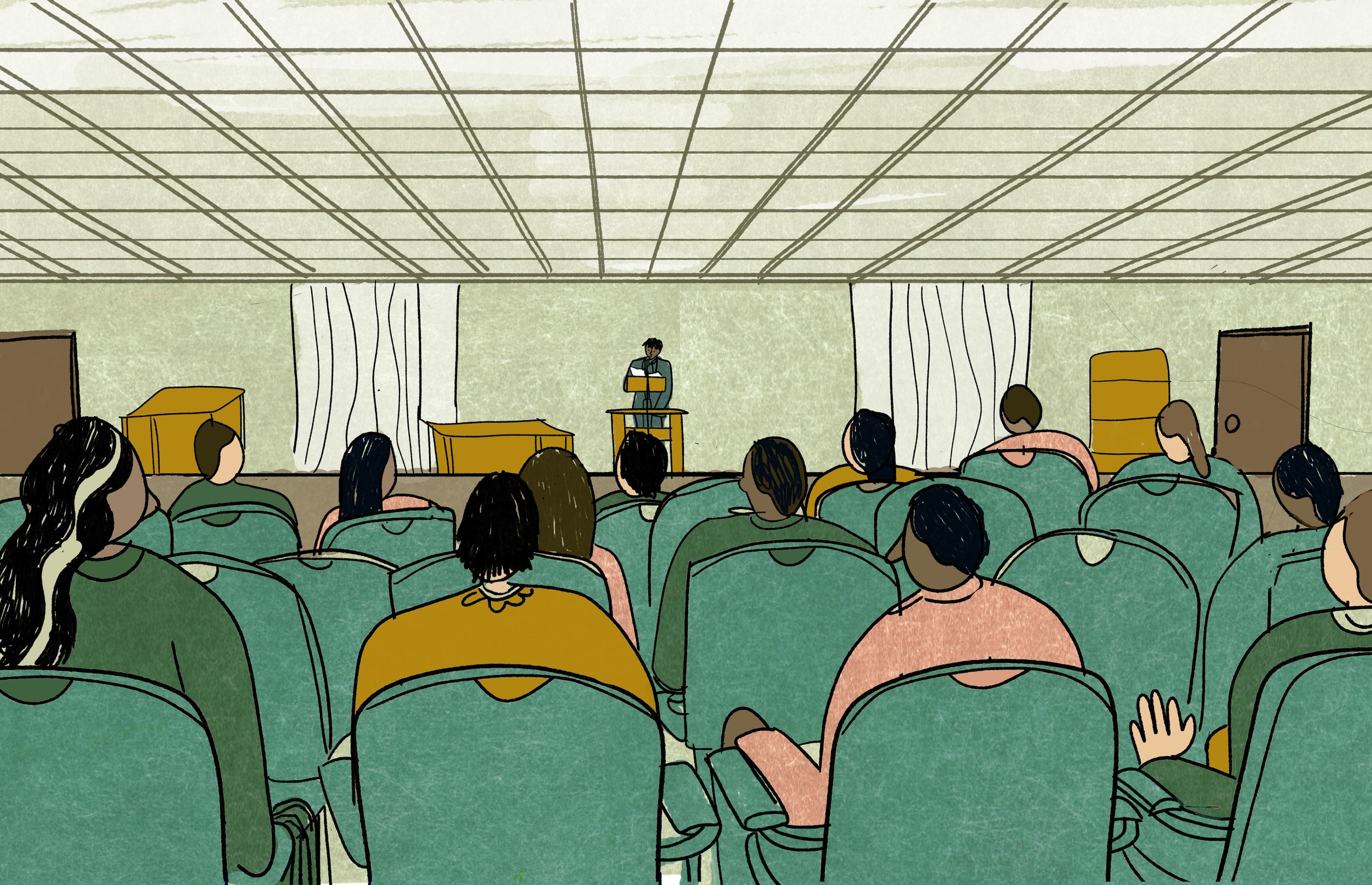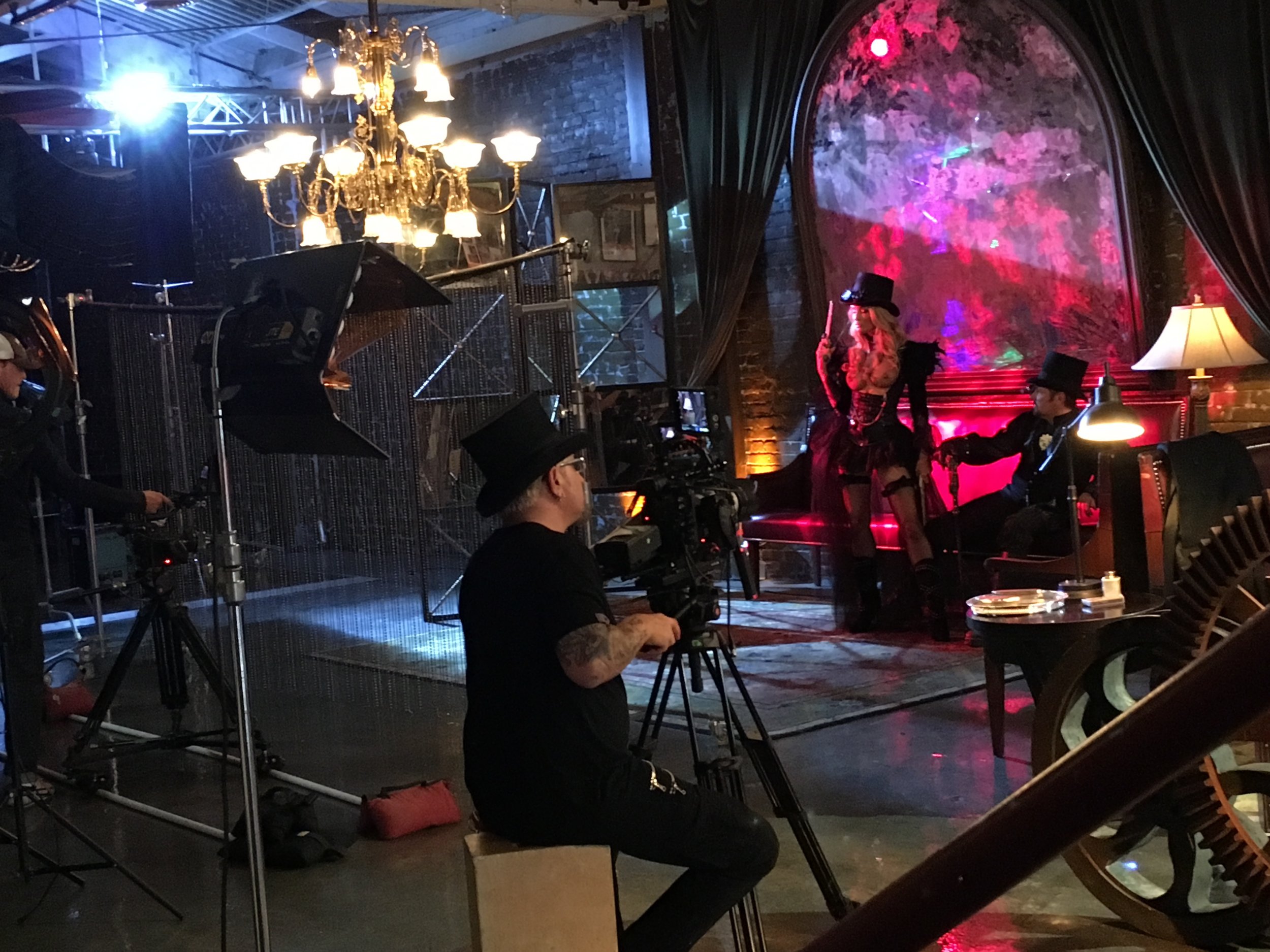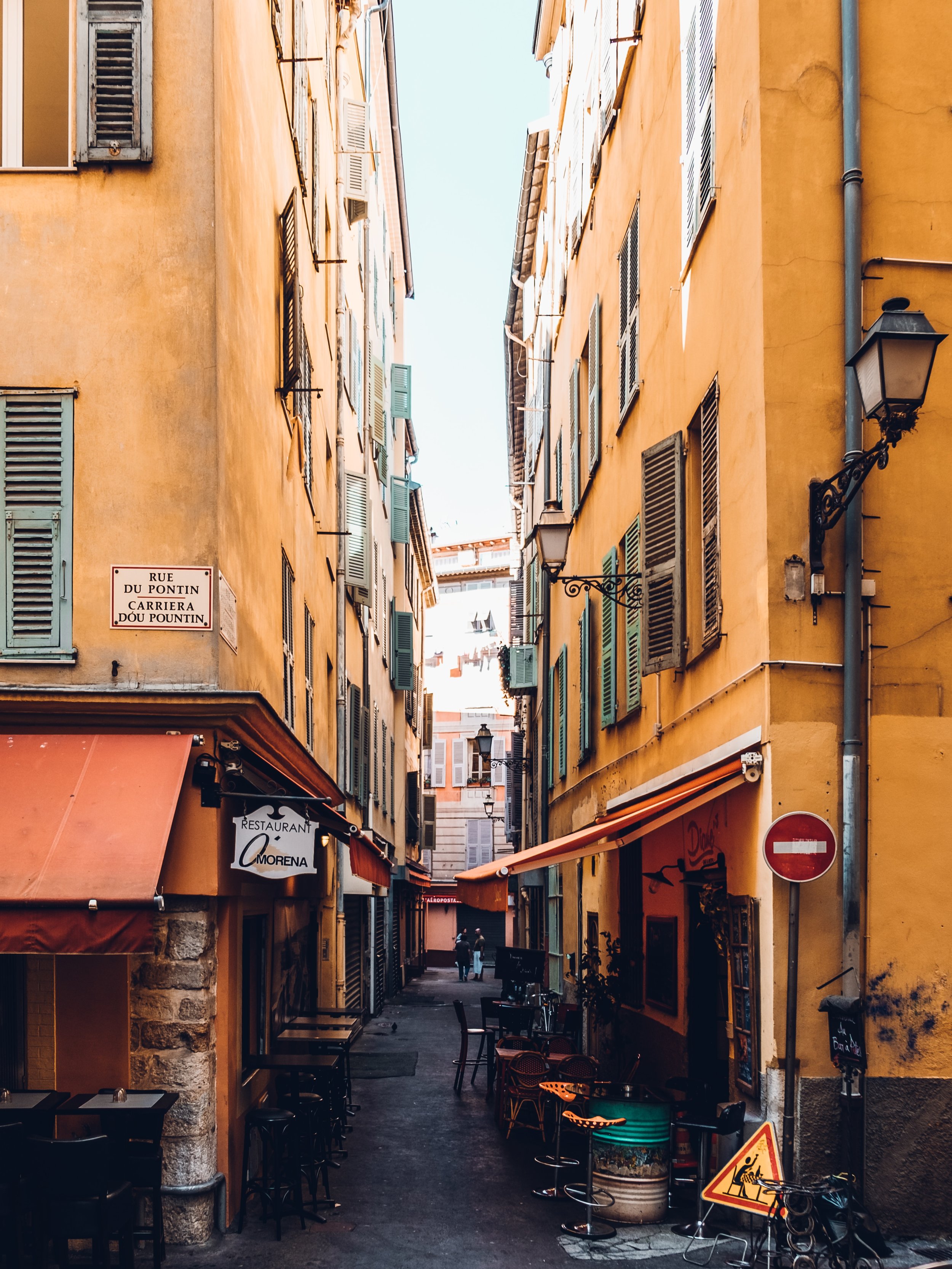Céline Alexis Buehrer: Senior Designer at Coach
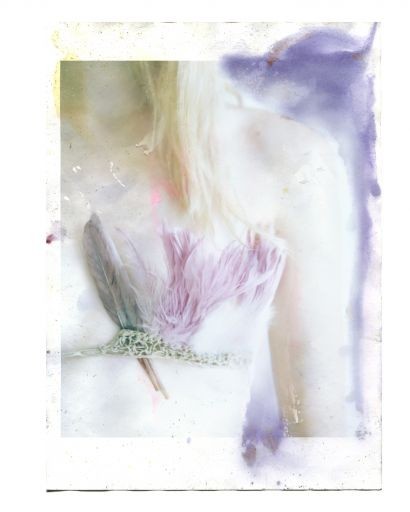
In 2016, Coach, Inc. moved from West 34th Street into the all-glass high-rise at 10 Hudson Yards—a Chelsea redevelopment project that intersects with the High Line park. Up the escalators and past backlit displays of handbags, Coach occupies ten floors total. Céline Alexis Buehrer works on the 17th floor, where—among hundreds of employees—only two people hold her title: Senior Menswear Designer.
Racks of assorted jackets, coats and pants line the aisles of her office, and design boards lean, propped up against file cabinets. At one end of the space, light floods through floor-to-ceiling windows, illuminating a sleek and spacious conference room. Currently, Céline is working on the pre-Fall 2019 ready-to-wear collection, which will be sold at high-end department stores like Barneys and Selfridges London starting a year from now.
Céline first joined Coach in 2014, when her husband at the time got a job in New York. Before that, she studied fashion design in Geneva, Switzerland and worked at Surface to Air in Paris, where she ascended from hair and make-up assistant to senior designer in just five years. Today she reports to people who are well-known in the industry—Keith Warren and the famously eccentric Stuart Vevers—and she has two assistants of her own. Her husband recently moved back to Europe, and he asked her to come with him. This time, Céline did not go. It was a difficult separation.
Posted up on a High Line park bench, in the shade of Hudson Yards tower and surrounded by plants and sculptures and the blares of construction all around, Céline leans forward, cupping a small soy cappuccino from Think in her hands. She is wearing a white t-shirt and effortlessly cool, baggy jeans. Her platinum blond hair is tousled, and round glasses perch on her strikingly arched nose. She has a way of seeming aloof. Self-contained and ethereal. But she is also serious. I am surprised at the vehemence and candor with which she answers some of my questions.
Her French accent is charming, though her phrasing can be odd at times—especially when represented in print—so this interview has been lightly condensed and edited. She lives in Crown Heights, Brooklyn. She is 34 years old.
OA: How did you get the job at Coach?
CB: In 2014, when I came to New York, I met a headhunter—it’s very important to meet headhunters if you want jobs. First she suggested to me the women’s department at Coach, but I ended up interviewing for men’s because that’s where the opening was. My headhunter got me an interview with HR. I met my boss. We talked for 20 minutes. I went home. Right away, my headhunter told me she got an email from Coach saying, “We want her.” So I got the job. I started as a freelancer, and they hired me in-house later.
OA: What drew you to New York?
CB: I’m from Switzerland. Ever since I was big enough to make my own decisions, leaving the country was the thing. Working in fashion, Paris was the first step because it was next door. But then there is New York, which is this amazing city in the US. When discussing that with my husband, I was like, “If you go in a city where I can work, I will come. If you go to Cambridge or Hamburg, I am not going to come.” New York came up, and it’s just the dream. Just to live in New York. I did make sacrifices to be here, though: I left all my friends and my job. I couldn’t work for six months. I had no money, and I had no network. I had to build my network. I had no friends except my husband’s friends. That’s a big adjustment to make.
Jewelry by Céline Alexis Buehrer. Photo by Marie Taillefer.
“I guess I would like if someone thought my physicality, or my nose, or something weird in my appearance was worth showing. I could be proud of that. Otherwise, I don’t want to be famous for anything.”
OA: How do you spend your days?
CB: We have a lot of meetings. It depends. On Tuesday and Thursday we have a meeting with Keith Warren, my boss's boss who reviews all the ready-to-wear. We have leather and fabric meetings. Mostly it’s answering emails, doing design cards, artwork, some illustrator—so being on the computer. Attending meetings. Sketching is probably 5% or 10% of my time right now. My boss is sketching the most part of it. It’s a way of working that evolved through the years, and how the team moved and changed. I would love to sketch more and do less design cards and small work. But we are a small team so we all have to do a lot.
OA: What parts of your job are you good at? What are you bad at?
CB: I’m very organized and I’m good at knowing how much time things take. I’m good at knowing how fast people work, and to which person I can give a task. I know exactly the way I work and how long things take me. I’m good at managing time. I would say I’m precise and I work hard. I’m less good at interacting with my co-workers—not in the way Americans like it. I think it’s maybe a Swiss thing, but my work is my work, and they pay me to do that work. So I’m here to do a service. I’m not really here to socialize or make friends. I’m here to work. If I come across as cold or unhappy it’s because my only concern is to get the stuff done and go home. For the others, work is more important in their lives. They invest more in the workplace. And I don’t.
OA: Is work culture different here from work culture in France?
CB: Here you live to work. Americans love to work, and they work insane hours. In Europe you have more a sense that life is something else. You have your lunch break. You have more holidays and vacations. I don’t know how, but in Paris and New York, I have the same job—except that in Paris I have more free time, which I don’t have here. I think they just like to see you working.
OA: Are there other parts of the US that intrigue you?
CB: LA is cool, and I know I could do fashion in LA because it’s more relaxed. I think in fashion you cannot work anywhere else. I am slowly discovering the places in the country. I went to New Orleans a month ago, and I’m going to Santa Fe in a few weeks. I don’t want to live in those places, but I am happy to discover them.
“The essence of design is just to express who you are, or express a view you have of the world. For me, it’s also about the sense for craftsmanship.”
Céline Alexis Buehrer. Photo by Guillaume Géraud.
OA: Were your co-workers affected by Kate Spade’s death? Were you affected?
CB: It made us really sad. Fashion is a hard world. Kate Spade’s death is not the first one, it’s not the last one. I think the news was harder for the Kate Spade people, of course. The Kate Spade company is in the same group as Coach, but she did not come to this building often. We only heard the news through Instagram and email. It’s a good reminder, though… I had a burnout in March. I was completely overwhelmed. I was stressed about everything, I had no memory anymore. I had no attention anymore. I was sad coming to work, I was sad at work. What I did was I talked to HR before reaching that point, and I was like, “I need to take a week or I’m going to explode.” I organized my burnout. I told my boss I was going to leave, and I made a freelancer come in. So it’s not like I went to a doctor and never came back. I tried not to get to that point. I tried to take care of myself before. Now more than ever, my health is more important than my work. I don’t want to be in that state one day where I don’t have the resources to fight.
OA: What would you say to someone who asked if fashion was frivolous or superficial?
CB: They are probably right. There are two sides. When you start doing design, as a student, or when you are younger, there is a true will to express yourself and be able to give that option to other people. That’s what design is. I give you options so you can tell who you are to the world, in the best way. But then you go into fashion—with these big groups and big brands—where money is the most important thing, and image is the most important thing. You need to have Instagram, and you need to have views. So then it’s numbers, and you lose the essence.
OA: What is the essence, to you?
CB: The essence of design is just to express who you are, or express a view you have of the world. For me, it’s also about the sense for craftsmanship. I am really attracted to anything that is handmade. In my personal work, I like homemade designs, which is more like haute couture than fashion. Something that you need to produce by yourself. All the traditional craftsmanship you can find, I like that.
OA: I recently saw you post images online of henna on your hands. It reminded me of Yves Saint Laurent, who loved Morocco. He drew a lot of inspiration from Morocco, and I think he was one of the first European fashion designers to employ ethnically diverse models for his shows. Is this cultural appropriation? What makes such a thing successful, rather than offensive, to your eye?
CB: I’ve become more aware of questions around cultural appropriation since I moved to the US. It’s a strong part of the conversation here, more than in Europe. But I always liked henna. I like tattoos. I like the traditional way of doing henna, because it’s a traditional thing and it takes time. It’s women tattooing women. I think about that question of appropriation, though, when I have the henna on my hands. The designs belong to a culture that is not mine. But they give me so much pleasure! Also, the woman who is showing me henna—she is American but she used to live in Morocco, and she was married to a Moroccan guy. She learned it at the true place and she brought it back. She lived there with them. She knows the culture. She knows everything. That makes it more logical for me.
Jewelry by Céline Alexis Buehrer. Photos by Marie Taillefer.
OA: Do you have favorite icons or influences in the industry? Where do you draw inspiration from? (The last time I saw you, you had just finished a book about psycho-magical realism by Alejandro Jodorowsky.)
CB: Alejandro Jodorowsky, it is so curious that I’m attracted to him. He’s just so weird, and doing these amazing movies, and reading tarot cards. In music, I like Erykah Badu. Her style is very strong. I discovered her in Switzerland when I was a kid and I saw her on TV. I was like, “Who is she?” She has this amazing voice, her style is amazing, and she seems to be a good human being. I like Tilda Swinton, too. I always hoped I would look as strange and beautiful as her. Her filmography is great, and I like her way of living. The discretion around it. In fashion, I like brands. I like work. I am not sure I like one designer especially. I never was a fan of people. When I was younger I admired Cristobal Balenciaga. I was amazed by the volumes and silhouettes. If I had to think of more, I would say I am attracted to women designers because they have to fight more to get there.
OA: On your website there are photos with nudity. When I was growing up I never saw nudity in mainstream magazines. Why is that? What role does nudity play in fashion, and aesthetics?
CB: Sex is attractive. Everybody wants sex, and in fashion, women’s bodies are more shown than men’s. We could have another conversation about that. Because women—half-naked—you look at it, and you like it. And the products associated with it… it’s not a good way of selling products. In my personal work, on my website, there is a guy who is topless, and then there is me, and you can actually see my boobs in one of the pictures. I did that shoot with my roommate who is a very close friend. And Barnabé, the model, is also a good friend. I thought the nicest way to show the piece at the time was to have no clothes. Just skin and the feathers. So we went there.
OA: In a collaboration like that, do you think you can achieve different levels of vision, or different levels of experimentation, when you are working with close friends? As opposed to, if you were doing that shoot here in the Coach office. Would the end result be different?
CB: Yes, definitely. Marie, my friend, knows me very well and I trust her. I like her pictures, I know what she’s doing. I know how she’s working. She could ask me anything and I would do it, because I know her eye, and her style is great.
OA: What is next for you career-wise?
CB: I don’t know what the future is going to be. There are other things I would like to do, like working with flowers and big-scale arrangements. Stuff like that. I don’t know how to get there yet. I am not sure I will work in fashion the rest of my life. This will be the year where I decide what’s next.
OA: If you were to be famous for something, what would it be?
CB: I guess I would like if someone thought my physicality, or my nose, or something weird in my appearance was worth showing. I could be proud of that. Otherwise, to be famous I would need to do something great. I don’t want to be famous for anything.
ABOUT THE INTERVIEWER
Rachel Veroff is a writer from New Mexico now living in New York. She is an editor for Off Assignment, and she is working on a novel.
Header image by Céline Alexis Buehrer.
Photography by Marie Taillefer.





